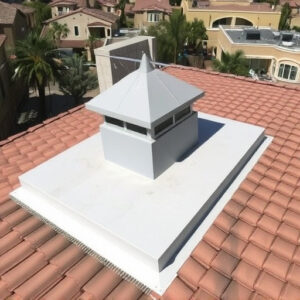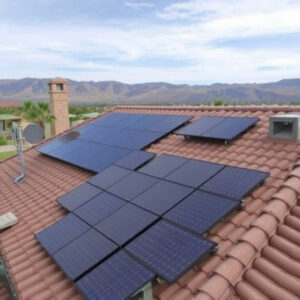Immediate Action For GE Dryer Emergencies Your Guide To Fast Repair In Austin
When choosing GE appliances for your home, it's essential to consider the energy efficiency ra…….

When choosing GE appliances for your home, it's essential to consider the energy efficiency ratings which are clearly indicated on the EnergyGuide label and potentially complemented by ENERGY STAR certification. These labels provide valuable insights into an appliance's estimated yearly energy consumption and costs, allowing for easy comparison among similar products. GE's commitment to sustainability is reflected in their energy-efficient designs, with newer models often being more efficient than their predecessors. The EnergyGuide label offers a snapshot of a product's energy use, while the ENERGY STAR status signifies adherence to high efficiency standards set by the EPA, potentially leading to lower utility bills. GE has also introduced its own label to further categorize appliances within their range. For refrigerators, A++ rated models stand out for their exceptional energy efficiency and minimal environmental impact. When selecting a fridge or any other GE appliance, it's important to consider not just the energy rating but also factors like performance, shelf life, capacity, and additional features. Across GE's washing machines, front-load models are more efficient than top-load ones due to their advanced technologies and design elements. Dishwashers with higher Energy Star ratings can lead to significant savings on utility bills by using less energy and water. GE's dryers and ovens incorporate energy-saving features like moisture sensors and precise temperature control, without compromising performance. Consumers should refer to the EnergyGuide label for specific annual energy consumption data and select models that align with their energy conservation objectives and financial considerations.
When it comes to optimizing your home’s energy consumption, understanding the nuances of appliance energy ratings is paramount. GE, a leader in household innovation, offers a spectrum of appliances with varying energy efficiency labels. This article delves into the energy ratings across GE appliances, providing a detailed comparison of refrigerators, washing machines, dishwashers, dryers, and ovens. From the initial overview of GE’s energy efficiency labels to a granular analysis of each appliance category’s energy consumption, homeowners can make informed decisions that align with their sustainability goals and budgetary constraints. Join us as we evaluate the impact of these ratings on energy usage and offer a comprehensive guide to selecting energy-efficient GE appliances.
- Understanding Energy Ratings for GE Appliances
- Overview of GE Appliance Energy Efficiency Labels
- Comparing GE Refrigerator Energy Ratings Across Models
- Analyzing GE Washing Machine Energy Consumption Variations
- Assessing GE Dishwasher Energy Usage: What the Ratings Tell You
- Evaluating the Energy Impact of GE Dryers and Ovens: A Rating Guide
Understanding Energy Ratings for GE Appliances

When evaluating the efficiency of GE appliances, understanding their energy ratings is key to making informed decisions about your home’s energy consumption and costs. Energy ratings for GE appliances are determined based on a variety of factors including the appliance’s design, performance, and energy usage under typical conditions. These ratings are indicators of how much energy an appliance uses in comparison to similar products in its category. For instance, the yellow EnergyGuide label found on most GE appliances provides valuable information on estimated yearly energy consumption and operating costs. It also helps consumers compare models within the same product type.
Furthermore, GE appliances are often rated using the ENERGY STAR certification, which signifies that the product meets strict energy efficiency guidelines set by the U.S. Environmental Protection Agency (EPA). This certification not only highlights cost savings but also reflects GE’s commitment to sustainability and eco-friendly practices. To get the most out of these ratings, it’s advisable to consider both the EnergyGuide label and ENERGY STAR certification when selecting appliances. Additionally, looking at the model year, as newer models tend to be more energy-efficient than their predecessors, can further guide your choice towards more efficient GE appliances. Understanding these ratings allows consumers to select appliances that align with their energy conservation goals and contribute to a more sustainable home environment.
Overview of GE Appliance Energy Efficiency Labels

General Electric (GE) appliances are equipped with energy efficiency labels that provide consumers with valuable insights into the energy consumption of their products. These labels, adhering to the Federal Trade Commission’s (FTC) guidelines, are designed to make it easier for homeowners to compare the energy usage of different models and brands. GE’s appliances often feature the familiar yellow EnergyGuide label, which estimates the annual energy consumption and operating costs of the appliance. Additionally, many GE products carry the ENERGY STAR certification, indicating that they meet the strict energy efficiency guidelines set by the U.S. Environmental Protection Agency (EPA). This certification not only signifies a commitment to sustainability but also often translates into tangible savings on utility bills for consumers. Beyond these certifications, GE has developed its own proprietary labels, such as the GE Energy Efficient label, which further categorizes appliances based on their energy performance. These labels help consumers quickly identify the most energy-efficient options within the GE product lineup, facilitating informed purchasing decisions that balance efficiency with performance.
Comparing GE Refrigerator Energy Ratings Across Models

When assessing the energy efficiency of GE refrigerators, one will notice a range of energy ratings across different models. These ratings are indicative of the appliances’ performance in terms of energy consumption and can vary significantly based on design, size, and technology incorporated. For instance, some models may boast an A++ energy rating, signifying top-tier energy efficiency and minimal environmental impact, while others might fall within the A+ to A range. Consumers looking for energy-saving options should consider factors such as shelf life, capacity, and additional features alongside the energy rating. Models with similar capacities can have vastly different energy ratings due to variations in insulation quality, cooling technology, and energy consumption patterns. It’s advisable to compare models based on their specific energy consumption values, often measured in kilowatt-hours (kWh) per year, to determine which GE refrigerator best aligns with one’s energy usage preferences and budgetary constraints. By carefully evaluating these metrics, consumers can make informed decisions that balance energy efficiency with the performance needs of their household.
Analyzing GE Washing Machine Energy Consumption Variations

When assessing the energy consumption of GE washing machines, it’s evident that there are notable variations among different models. These differences are influenced by factors such as machine size, technology integration, and design efficiency. For instance, front-load washers generally consume less energy compared to top-load models due to their centrifugal rinsing capabilities that reduce the need for high water temperatures. GE’s advanced tech models may incorporate sensors and settings that optimize water and energy usage based on load size and soil level, further contributing to energy efficiency. Additionally, newer models often feature a more energy-efficient motor design and improved insulation, which can lead to significant reductions in electricity consumption over the machine’s lifespan. Consumers looking to minimize their carbon footprint should consider these factors when selecting a GE washing machine, as the energy rating labels provide a clear indication of the appliance’s efficiency class. By analyzing the energy consumption data and understanding the technologies employed by GE in different washing machine models, consumers can make informed decisions that align with their energy savings goals.
Assessing GE Dishwasher Energy Usage: What the Ratings Tell You

When evaluating GE dishwashers for energy efficiency, it’s crucial to scrutinize the Energy Star ratings and other energy usage indicators they present. These ratings offer a snapshot of how much electricity a dishwasher will consume during its operation. A higher Energy Star rating signifies a more efficient appliance, translating to lower utility bills over time. GE has incorporated advanced technologies in some of their models that optimize water and energy usage. For instance, features like smart wash systems and delay start options can contribute to reduced energy consumption by operating at off-peak hours. By examining the kWh (kilowatt-hours) per year a specific model uses, consumers can make an informed decision that aligns with their energy conservation goals and budget constraints. It’s also worth comparing these ratings against other models within GE’s lineup as well as competitor brands to identify the most energy-efficient options available in the market. Understanding these ratings empowers homeowners to select a GE dishwasher that not only performs effectively but also offers significant savings on their electricity bills without compromising on cleaning performance.
Evaluating the Energy Impact of GE Dryers and Ovens: A Rating Guide

When assessing the energy efficiency of GE dryers and ovens, understanding their respective Energy Star ratings is crucial for consumers seeking to minimize utility costs while maintaining high standards of performance. GE’s lineup of dryers is designed with energy-saving technologies that reduce the amount of electricity consumed without compromising on drying effectiveness. These technologies can include advanced moisture sensors and efficient heating elements that adapt to the load size, ensuring clothes are dried using the least amount of energy necessary. For ovens, GE incorporates features such as precise temperature control, which helps in achieving desired cooking results while minimizing energy usage. The Energy Star rating system provides a clear indicator of a product’s energy performance, allowing for straightforward comparisons between different models. By selecting dryers and ovens with higher Energy Star ratings, consumers can expect to enjoy significant savings on their energy bills, without sacrificing quality or convenience in their everyday tasks. It is recommended to review the specific model’s yellow Energy Guide label, which offers detailed information on annual energy consumption costs, allowing for informed decision-making when choosing between models from GE’s comprehensive appliance range.
GE appliances span a wide range of energy ratings, with each model offering distinct efficiency levels. This comprehensive analysis has shed light on the varying energy consumption patterns among GE refrigerators, washing machines, dishwashers, dryers, and ovens. By examining the specific energy labels and ratings, consumers can make informed decisions that align with their household needs and environmental considerations. It’s clear that understanding these ratings is pivotal in optimizing energy use within the home. Homeowners now have a solid foundation to compare models and select GE appliances that balance efficiency with performance, ultimately contributing to cost savings and reduced environmental impact. With this knowledge at hand, consumers are well-equipped to choose wisely among GE’s energy-efficient offerings.







